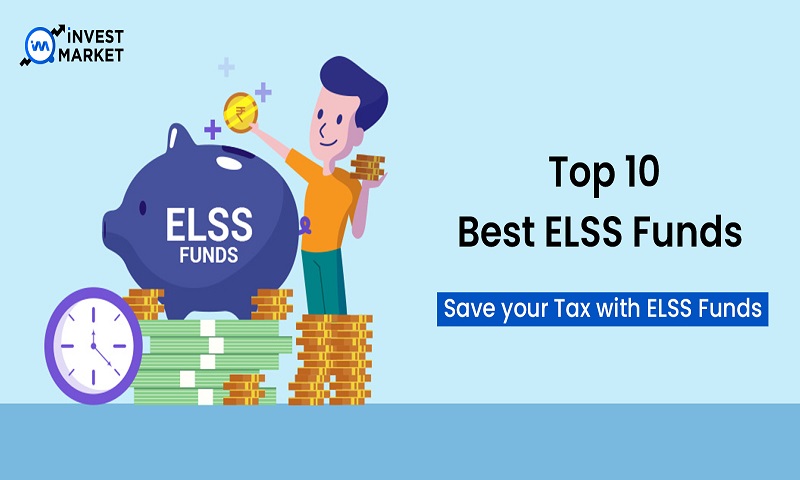What is ELSS Funds?
Equity Linked Saving Schemes (ELSS), popularly known as an open-ended mutual fund. ELSS is equity-oriented mutual funds which is one of the top ELSS mutual funds invests in equity and its securities of companies. One who invests in best ELSS mutual funds is eligible for saving tax under section 80C of the Income Tax Act.
Moreover, If you invest in ELSS mutual funds, you can save up to Rs 1.5 lakh per year.
Why Invest in Top ELSS Funds for saving tax?
Top ELSS funds have different schemes that have great product features than any other tax saving investment options like ULIP, NSC, PPF, and FDs.
→ Higher Returns
Equities can be very volatile in the short term as ELSS funds have the potential to generate higher returns.
→ Shortest Lock-in Period
The lock-in period of ELSS funds is just 3 years as it is one of the lowest among all the tax-saving investment options. These investment options are eligible for deduction under Section 80C of Income Tax Act. Hence, the best ELSS funds offer the highest form of liquidity among all tax saving investment options.
These tools are the benefits of achieving future financial goals like funds for children’s education.
Who Should Invest in ELSS Mutual Funds?
Anyone can invest in ELSS mutual funds. But it is only suitable for those people who are knowledgeable and have enough guts to take risks and the ability to pay long term.
In the initial year, young investors can invest with a long-term horizon. So it is the best ELSS funds that are suitable for young investors. Because they have enough time to unleash the power of compounding to the fullest to utilize high returns while saving heavy taxes of up to Rs 46,800 a year.
Advantages of ELSS Mutual Funds
a) One of the shortest lock-in periods of three years
b) Offer much higher returns than other tax saving options like PPF or NPS.
c) Earnings are taxed only at 10% of the gains.
d) No maximum limit to invest.
e) It does not require in-depth knowledge to invest. These investments can be easily managed by professional fund managers and maximize the return on your investment.
How to Evaluate The Best ELSS Mutual Funds?
→ Expense Ratio
The expense ratio shows how much you need to invest in managing the fund. If the expenses are low; it will translate into higher returns. Thus, you need to choose that fund that has a lower expense ratio.
→ History of Funds
To check the accurate performance of funds, you have to determine the quality of stocks and benchmark. If a fund does not perform well or the stocks are of higher performance, then, in that case, fund delivers high returns.
→ Return Benefit on funds
You need to analyze and compare the performance of funds with other competitors and make sure the fund has been consistent over the past years. These are factors that one needs to consider while investing in funds.
Top 10 Best ELSS Mutual Funds
If you are really concerned to invest in the best ELSS mutual funds, then you are in the right place.
To make sure you are on the right path. You need to compare different parameters of different funds before choosing it.
Basically, investing depends upon financial goals, the risk appetite of investors. The following table shows the top 10 ELSS funds based on the past one and three years of returns.
| Fund Name | Category | 1-Year Return | 3-year Return |
| Invesco India Tax Plan | Equity |
5.29
|
4.56
|
| Axis Long Term Equity | Equity |
0.13
|
4.92
|
| Aditya Birla Sun Life Tax Relief 96 | Equity |
3.25
|
2.28
|
| ICICI Prudential Long Term Equity | Equity | -5.48 |
1.96
|
| Tata India Tax Savings | Equity |
-3.22
|
1.45
|
| Kotak Tax Saver | Equity |
-0.70
|
2.11
|
| BOI AXA Tax Advantage Fund
| Equity | 15.81% | 14.99% |
| UTI Long Term Equity Fund (Tax Saving) | Equity | 4.68% |
4.86%
|
| Mirae Asset Tax Saver Fund
| Equity |
4.36%
|
16.88%
|
| DSP Tax Saver | Equity |
1.09
|
1.97
|
Tips for Investing in ELSS Funds
- Don’t wait for the previous month’s financial year for investing in ELSS. Instead, you can choose the SIP option to divide your investments across the whole year. Moreover, you can get benefits from cost averaging during a market correction.
- If possible, while making fund selection, compare the previous performance of 3-, 5- and 7-year periods. Comparing past returns will help you in knowing how they handle various market conditions.
- Select the direct plan for getting the benefit of higher returns. More importantly, it has a lower expense ratio.
- Don’t get in the trap of dividend option. Except for this, choose the growth option to get benefits.


